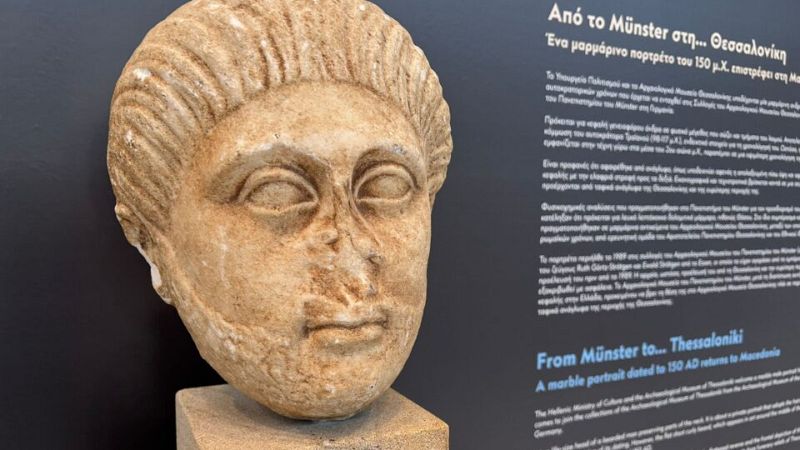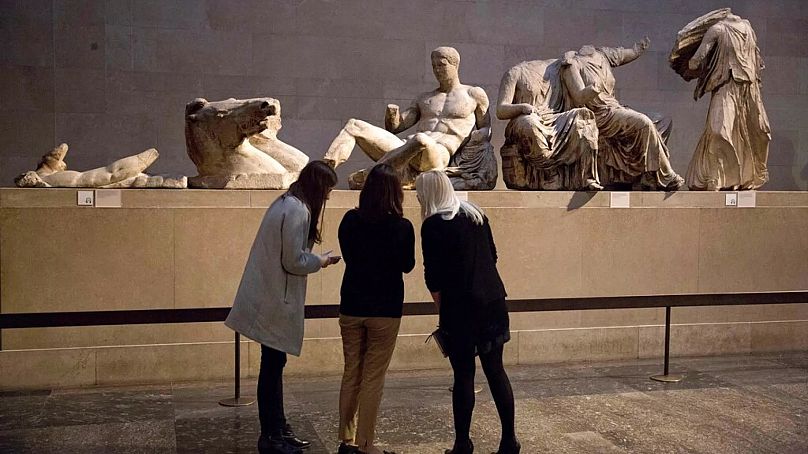German museum repatriates ancient marble head to Greece

A marble head of a man dating from 150 CE has been returned to Greece by the University of Münster’s Archaeological Museum in Germany. The museum voluntarily returned the artefact, part of a funerary relief from a cemetery, after researchers raised concerns about its ownership history.
The sculpture will now go on display at the Archaeological Museum of Thessaloniki, Greece’s second-largest city.
During a repatriation ceremony, Greek Culture Minister Lina Mendoni praised the agreement as a fair resolution between the two institutions, noting that repatriation cases, in contrast, often involve lengthy legal disputes between countries.
The artefact, which was donated to the Münster museum in 1989 by a private German collector, had an unclear ownership record prior to its permanent acquisition. Research confirmed that the marble head originated from Thasos, an island in the northern Aegean, leading experts to conclude that the sculpture was originally from Greece.
“Today’s return,” Mendoni said, quoted by Greek Reporter, “carries a special semiotic dimension, as it does not constitute the successful conclusion of a claim process. In this case, the Museum of the University of Münster voluntarily decided to return the head to Greece. When it was determined that its origin and its course, before 1989 – the year in which it was included in the Museum’s collection, as a donation by German citizens – were unclear and suspicious.”
Achim Lichtenberger, director of the museum in Münster, emphasised the value of the artefact and noted that its return to Greece will allow it to be studied in context with other similar objects. The precise circumstances surrounding its removal from the original site remain unknown.
In a statement, Lichtenberger reaffirmed the museum's commitment to ethical acquisition practices, despite the findings of the researchers. He highlighted that the museum regularly reviews its collection to ensure compliance with the UNESCO 1970 Convention on the means of prohibiting and preventing the illicit import, export, and transfer of ownership of cultural property.
Will the Münster Museum's decision to repatriate the ancient marble head add fresh fuel to the fire over the Parthenon Marbles debate?
Mendoni has expressed Greece’s determination to continue its efforts for the return of the sculptures from the British Museum, with a place set aside for them in the Acropolis Museum in Athens.
The British Museum has maintained that Ottoman authorities granted an imperial edict allowing the sculptures to be removed from the Acropolis, but earlier this year a Turkish official cast doubt on the document’s existence.
Today



